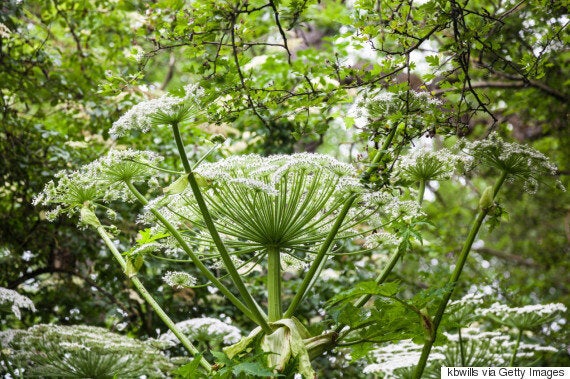Giant hogweed has made headlines recently for all the wrong reasons.
In June, gardener Dean Simmons warned others to look out for the plant after it burned his skin and left him in "pure agony".
This month, six children have been reported to have suffered burns due to the toxic plant.
Five of the children experienced burns after coming into contact with giant hogweed in Greater Manchester parks and earlier this week, 10-year-old Lauren Fuller suffered from third degree burns when she picked up some giant hogweed while out walking with her family.
So, what is giant hogweed and should we be worried about it?

What Is Giant Hogweed?
"Giant hogweed (Heracleum mantegazzianum) is a close relative to cow parsley originally from Southern Russia and Georgia," Guy Barter, chief horticultural advisor at The Royal Horticultural Society tells HuffPost UK Lifestyle.
"Several species of giant hogweed were introduced into Britain and Europe from the Caucasus Mountains in the nineteenth century."
According to Barter, giant hogweed was introduced into the horticultural trade and it was widely planted in ornamental gardens throughout Britain due to its aesthetically pleasing nature.
Unfortunately it quickly escaped from cultivation and is now a widely invasive species throughout much of Britain and Europe - it is especially abundant near waterways and areas prone to flooding.
What Makes The Plant Toxic To Humans?
"Giant hogweed contains chemicals that pick up sunlight and re-emit it in damaging wavelengths," Barter explains.
"The official name for these chemicals is furocoumarins, including psoralen, 5-methoxypsoralen, and 8- methoxypsoralen. They are potent photosensitising chemicals with near ultraviolet light (300-380 nm)."

What Happens If You Come Into Contact With Giant Hogweed?
Stephanie Munn, a dermatologist at Bupa’s Health Centre on Basinghall Street in the City tells us touching giant hogweed can cause big blisters and burns to form on your skin, as "chemicals in the plant mean that skin becomes extremely sensitive to sunlight".
"These blisters can last several days, and in some severe cases, weeks, which may leave scarring." she adds.
What Should You Do If You Come Into Contact With Giant Hogweed?
If you think you have come into contact with the plant, both Munn and Barter recommend you wash the sap off of your skin with plenty of cold water immediately, then seek further medical advice.
"Burns and blisters can be treated with a strong topical steroid and in severe cases with oral prednisolone," Munn adds.
"Your GP or accident and emergency would be able to advise on the best treatment."
SEE ALSO:
Giant Hogweed Plant Leaves 10-Year-Old Girl With Third Degree Burns: 'Her Skin Completely Melted'
Gardener Warns Of Giant Hogweed Dangers After Being Left With Agonising Blisters And Burns
Woman Allergic To The Sun Due To Rare Skin Condition Nicknamed 'Real Life Vampire' By Her Children
